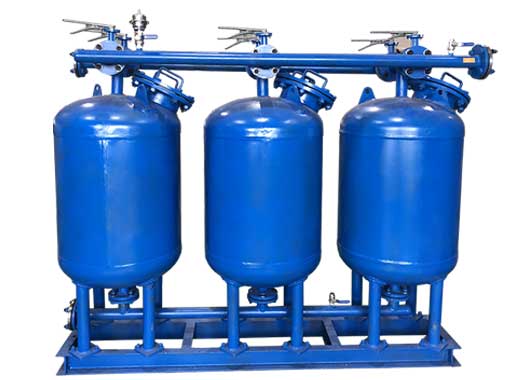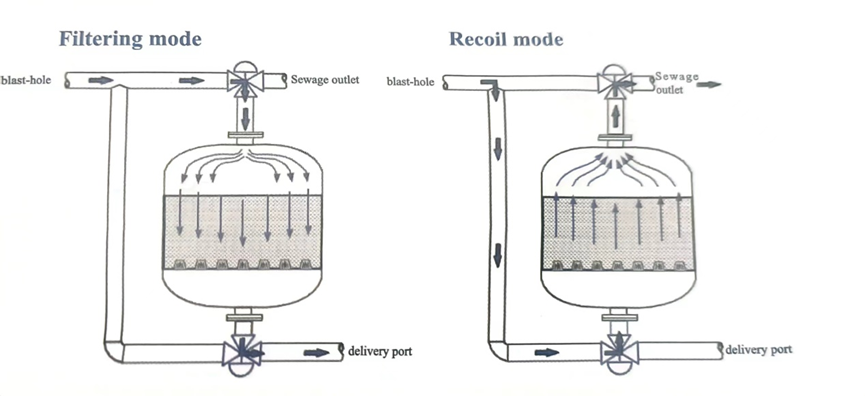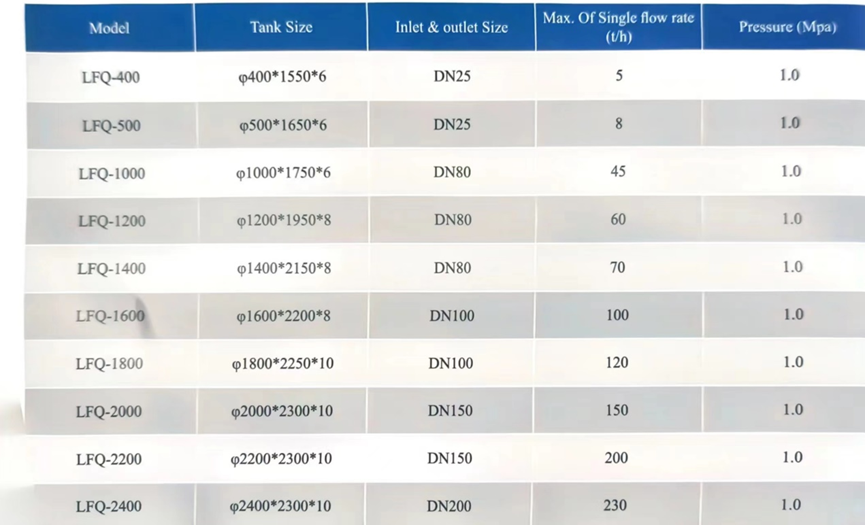The shallow sand filter is an efficient water treatment solution that serves multiple functions. Primarily, it works as a filtration system that removes impurities such as suspended solids, organic matter, and microorganisms from water sources, resulting in clean and safe water.
Its benefits to the consumers are manifold. Foremost among these is the assurance of clean water, a critical aspect of well-being. As it's user-friendly and requires less maintenance, it provides long-term cost-effectiveness, proving advantageous to budget-conscious consumers.
Moreover, the filter's eco-friendly nature aligns with today's growing sustainability movements. Hence, consumers can benefit from the high-grade filtration it offers while also contributing positively to environmental preservation efforts. In essence, the use of a shallow sand filter offers optimal performance, economic benefits, and a meaningful way to protect our environment.

The shallow sand filter boasts several significant features and advantages that set it apart from other filtration methods:
Durability: The filter is constructed with robust materials, ensuring its longevity despite regular use. This operational durability translates into an extended lifespan and fewer instances of expensive replacements.
Stability: It operates with a consistent level of performance, irrespective of the variations in water quality. This consistency of the filtration process ensures that the quality of the output water remains steady, providing safe and clean water at all times.
Efficient Drainage: It is equipped with a superior hydraulic design that ensures efficient drainage and prevents water stagnation. This contributes significantly to consistent water flow, optimal filtration, and reduces the risk of filter clogging.
Easy Cleaning: The design allows for easy cleaning and maintenance, thereby keeping the upkeep simple and manageable. Regular backwashing is straightforward and does not require complicated procedural steps, making the cleaning and maintenance a task with less fuss.
Cost-Effective: With its durable nature, stable performance, and ease of maintenance, this filter is a cost-effective solution in the long term. The cost-savings come in the form of reduced utility bills, and minimized needs for filter replacements or professional maintenance services.
These key features and advantages of the shallow sand filter make it a top choice for effective water filtration solutions, providing consumers with healthy, clean water while ensuring ease of use and long-term value for money.
Here's a detailed explanation of the main features and advantages of the shallow sand filter
Durability: One of the main strengths of the shallow sand filter is its crafted durability. Engineered with high-quality materials, the filter can withstand repeated usage over extensive periods, making it a long-lasting solution for varied water filtration needs.
Stability: Equally important is the filter's operational stability. Regardless of the water quality it encounters, the shallow sand filter maintains a steady filtration process, assuring consistent output quality. This equates to a reliable source of clean water for the user no matter the original water condition.
Effective Drainage: The filter also features excellent water flow and superior drainage capabilities. It is efficient in draining any accumulated or excess water, which reduces stagnation and ensures consistent filtration effectiveness. The design allows it to handle even large amounts of water without a decrease in its functionality.
Ease of Cleaning: Significantly, the shallow sand filter is designed with user-friendly maintenance in mind. It's simple to clean, typically requiring only routine backwashing procedures to flush out collected impurities. This feature reduces the need for complex maintenance, making it a convenient choice for users.
Cost-effectiveness: Given these features, another big advantage of the shallow sand filter is its cost-effectiveness. The filter's durability extends its lifespan, reducing costs associated with frequent replacements. Its stability ensures constant provision of clean water, reducing health-related expenses. The ease of cleaning also saves on potential maintenance costs, making it a beneficial long-term investment.
In summary, the shallow sand filter presents an efficient, durable, and economical solution for maintaining a continuous source of clean and safe water. It's a testament to an optimal blend of design and functionality.
Allow me to elaborate on the two-part filtration process - physical filtration and biodegradation - that takes place within a shallow sand filter.
Physical Filtration:
In this phase, the physical barrier of the sand layer is utilized. The suspended solids, when water is passed through the sand filter, are physically strained out. The tiny sand grains act as micro-barriers, blocking larger particles from passing through. This mechanism effectively removes the suspended solids from the water.
Biological Degradation:
Here, a biological layer, known as the 'Schmutzdecke', forms on the top of the sand layer over time. This layer comprises various microorganisms like bacteria, algae, and small invertebrates. These organisms consume the organic matter trickling down with the water. This biological degradation is a crucial part of the filtration system as it aids in the removal of organic matter and microorganisms.
As for the cleaning process, it involves backwashing, a simple procedure where water is pumped through the filter in the opposite direction to dislodge the trapped debris. Once the water running out of the filter is clear, it indicates that the filter is clean.
Disinfection is the final step, which is conducted to ensure that any remaining harmful microorganisms are killed. This is typically achieved by chlorination or by use of ultraviolet (UV) lighting. The clean, filtered water is now safe for consumption.
In essence, the shallow sand filter employs a mix of physical and biological methods to effectively remove various impurities from the water. Its easy cleaning and thorough disinfection process make it a reliable solution for providing safe and clean water.

Here are the specific technical details and specifications of the shallow sand filter:
Dimensions: Standing at a height of 40 inches (100cm approximately) with a diameter of 20 inches (approximately 50cm), the filter is compact enough for convenient placement and use in various settings.
Weight: Despite the robust design, the filter weighs only about 30 pounds (~13.6 kg). This makes it easy to handle and maneuver during installation and maintenance.
Filtration Capacity: The shallow sand filter can handle a remarkable 1000 liters of water per hour. This capacity ensures that the water needs of even large households can be efficiently met.
Adapted Water Quality: The filter is suited to deal with a variety of water qualities, with an acceptance level for input turbidity up to 50 NTU (Nephelometric Turbidity Units). This shows its capability to handle impure or cloudy water.
Range of Application: The shallow sand filter caters to a broad use case, including both domestic and commercial applications. It's ideal for homes, small businesses, irrigation purposes, as well as public facilities like schools and hospitals.
Energy Consumption: Despite its impressive functionality, the filter is energy-efficient, requiring just 0.5 kWh of power for every 1000 liters of water filtered. This low energy consumption contributes to cost savings and makes it an environmentally friendly choice.
These are the detailed specifications of the shallow sand filter, effectively highlighting its performance, practicality, and environmental efficiency.
Here are the step-by-step instructions for installing, using, and maintaining your shallow sand filter
Installation:
Identify Location: Choose a location that is conveniently accessible for periodic maintenance and cleaning. Ensure that the area is strong enough to handle the weight of the filter when filled with water and sand.
Set Up: Position the filter system upright onto its base. Ensure that the outlet pipe is correctly lined up to direct filtered water to your storage or use point.
Fill filter: Fill the filter with suitable quality filter sand, up to the indicated level within the filter tank.
Usage:
Begin Operation: Simply turn on the inlet water supply. Water should now flow through the sand filter and out through the outlet pipe.
Monitor: Regularly check the clarity of the filtered water, especially in the initial days, until the filter has fully matured.
Maintenance & Cleaning:
Backwashing: This is typically required when water flow reduces due to debris accumulation. To backwash, shut off the filter's inflow, then redirect the backwash outlet to a suitable location (away from the clean water storage). Open the backwash valve, turn on the water, and let it run until the water exiting the filter is clear.
Replacing Media: Over time, the sand media might need replacement. This is typically required every 2-5 years, depending on water quality and usage. To replace, merely empty out old sand and fill with new.
Winterizing: In colder climates, to prevent freezing damage, drain all water from the filter system before winter hits.
Disinfection: If necessary, periodic disinfection can be applied through chlorination or UV treatment.
Always remember, timely and regular maintenance will ensure the longevity and effectiveness of your shallow sand filter. It is essential to comply with all guidelines and precautions mentioned in the product manual to guarantee safe and efficient operation.
Here is a detailed look at the advantages and characteristics of a shallow sand filter:
Advantages:
Efficiency: Shallow sand filters are highly efficient at removing particles from water. They can filter out impurities down to a size of 30 microns, improving water clarity significantly.
Low Maintenance: These filters are relatively easy to maintain. The need for backwashing is less frequent as compared to other types of filters, saving both time and water.
Energy Saving: Shallow sand filters do not require power to operate, making them an energy-efficient choice for water purification.
Cost-Effective: The setup cost of a shallow sand filter system is lower compared to more complex filtration systems. The maintenance cost is also minimal as the primary material, sand, is readily available and affordable.
Eco-Friendly: The filtered water is safe for the environment, making the shallow sand filter an eco-friendly technology.
Characteristics:
Simple Design: The design of a shallow sand filter is straightforward, with no complicated moving parts. It typically comprises an enclosed container filled with sand and an inlet and outlet for water.
Broad applicability: Shallow sand filters are versatile and can be used in various scenarios, including homes, public buildings, and industrial applications.
Durability: These filters are usually made from robust materials, ensuring their durability and longevity.
Biological Component: Shallow sand filters often employ a layer of biological film in addition to sand. The biofilm contributes to removing certain toxic components from the fluid stream.
Size Variation: Shallow sand filters come in various sizes to suit different levels of water demand, offering flexibility in usage.
The benefits and features of shallow sand filters make them an attractive solution for individuals and organizations seeking a cost-effective, energy-efficient, and environmentally sound way of treating water.
Here is a detailed comparison between shallow sand filters and other types of filters, focusing on the unique differences and advantages of shallow sand filters:
Shallow Sand Filters vs. Activated Carbon Filters:
Shallow sand filters use sand as their main medium for purification and are primarily designed to remove suspended particles and turbidity from water. Activated carbon filters, on the other hand, are generally more efficient in eliminating dissolved organic substances, chlorine, and enhancing the taste and odor of water. The advantage of shallow sand filters over activated carbon filters lies in their simplicity, lower cost, and more extensive application for turbidity and particulate removal.
Shallow Sand Filters vs. Ceramic Filters:
Ceramic filters function by blocking contaminants as water flows through the micro-porous ceramic element. A shallow sand filter outmatches ceramic filters in several respects: it has a larger filtration surface area, is more efficient in filtering out smaller particles (<30 microns), requires less frequent maintenance, and is more cost-effective in the long run due to the lower cost of sand.
Shallow Sand Filters vs. Membrane Filters (Ultrafiltration & Reverse Osmosis):
Membrane filters utilize a semi-permeable membrane to block contaminants. These filters can eliminate the majority of dissolved solids, but they are more complex, require more maintenance, and are costlier. Shallow sand filters stand out for their simplicity, affordability, and considerable effectiveness, especially in scenarios where extreme levels of filtration are not required.
Shallow Sand Filters vs. Cartridge Filters:
Cartridge filters use a replaceable filter medium – typically made from polyethylene, ceramic, or activated carbon. Although they can be designed for various levels of filtration down to 0.5 microns, cartridge filters need frequent replacement (usually every 3-12 months), which contributes to higher operational costs and waste. In contrast, shallow sand filters require less upkeep, are more environmentally friendly, and economically viable due to the reasonable price of sand.
The unique advantages of shallow sand filters make them a versatile and effective solution for water treatment, especially in settings where simplicity, sustainability, and cost-effectiveness are prioritized.














